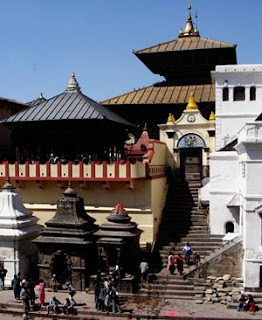While sitting for my CFA Level 1 examinations, I chose to sit at Kathmandu. Indian cities were not an option considering the sadistic moves of the ICFAI Institute, the naïve (if not corrupt) moves of the AICTE juxtaposed with the speed of dispute resolution in the Anglo-Saxon Jurisprudence as practiced in India.
Why Kathmandu ? Because one presumed that being the closest to India ( Gorakhpur to Kathmandu is barely 225 km), it would be the cheapest location to travel to. (On second thoughts, it was not particularly a smart move - I had to travel from Bangalore and not Gorakhpur, but too late - by then I had chosen my exam center)
The rest of the India was not particularly smart either. Some of my 'co-examinees' were from Mumbai ( a closer exam center was in Karachi- 500 nautical miles by the direct sea - a route which seems to fascinate 10 young men in the last week of November). The Calcuttans too came to Kathmandu in spite of the fact that Dhaka is just 245 km away. Chennaiites were smarter – They went to Singapore and Colombo (less popular of the two). They did not have to battle the climate, food or language as much as I had to.
First Flight Abroad !
I was on my first flight overseas ( Ok,ok, This is was not really overseas but international, nevertheless) to Kathmandu from New Delhi. You know, you still have to go to the International terminal, go through Immigration, security et al. reminding yourself that the famous IC-814 operates between the 2 cities that you were travelling currently.
After cavorting the Himalayan ranges, we land at the Tribhuvan International Airport, named after the grandfather of the deposed king Gyanendra (brother of slain King Birendra).
We landed at the Tribhuvan during the load-shedding hours. One was reminded of Lord Jeffery Archer’s comment, last August in Bangalore to promote the ‘Prisoner of Birth’. Speaking of travel in India, Archer likened the Lucknow Airport to Somalian airports 10 years ago. ( Before the aghast audience could protest, he assuaged them by saying Indian airlines like Kingfisher and Jet were the best airline in the world)
Kathmandu is the capital of the fragile secular republic ( I almost said Hindu Kingdom) of Nepal.
State of Affairs
The Toyota-made Micro is maneuverable and comfortable for the short distances in the city if only the staff donot overload it.
A common sight on the streets of Kathmandu was chicken / mutton shops and bars on either side of shrines and temples, something quite unimaginable in the parts of India this blogger has lives in/lived in. Varyingly, different levels of influence of India and China can be observed, i.e. Hinduism and Tibetian Buddhism are on display, in the food, clothing, prayer and so on. The most visible symbol of a Nepali is the Nepali Cap or Dhaka Topi.
Camp Thamel
So much for the state of affairs of the state. Camp: Thamel. Thamel was to be our home for the next 5 days. It is a hub for tourists consisting of all that could be expected in a tourist zone. Hotels ( budget to extravagant), pubs, restaurants, extortionist taxis, Wi-Fi, internet parlours, knick-knack stores, souvenir sellers, mountaineering gear, dance bars, cabbies who turns pimps after-dark et al. Three days were spent studying for CFA exams. I spent some time watching television- especially the channels banned in India – Al Jazeera ( what did you think ? ;)
Sight-seeing
We began our sight seeing day with Boudhanath,,one of the holiest Buddhist sites, located Bouddha, Kathmandu. The stupa's massive mandala makes it one of the largest spherical stupas in Nepal. The Buddhist stupa of Boudhanath dominates the skyline. The ancient Stupa is one of the largest in the world. The influx of large populations of Tibetan refugees from China has seen the construction of over 50 Monasteries around Boudhanath.
Legend say that an old woman built this stupa as a mark of respect on the remain of Kasyapa Buddha (Not to be confused with Gautama Buddha, whose birthplace, Lumbini is also in Nepal and hence caused trouble to the movie CC2C)
Then we visited- Swayambhunath. Swayambhunath is an ancient religious complex atop a hill in the Kathmandu Valley, west of Kathmandu city. It is also known as the Monkey Temple as there are “holy monkeys” living in parts of the temple in the north-west. However, there were lesser monkeys than what one could find at the hill temple of Lord Narasimha at Sholingur (near Tirutani, Tamil Nadu).
The next stop was Patan, by far the more interesting part of the day. Patan Durbar Square contains the King’s Court, numerous temples
Last Day. Headed of to meet an acquaintance of an acquaintance. (For those who know me, it comes as no surprise. Networking is inherent in me). Had to hurry to make it to the Pashupathinath. ( Imagine my ignominy, if my family realized that went all the way from Bangalore and had not visited the holy Temple).

Took pictures from my phone camera. Got caught by the police. Had to delete the pictures :(
Hum: Why will Nepal not have any thefts?
Tum: Because it is the land of the Gurkhas* !!

